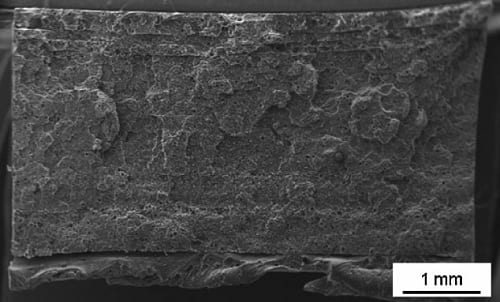To avoid complications associated with the use of metallic implants several studies on different absorbable materials have been carried out. An ideal absorbable material must meet certain medical and mechanical requirements, for example in fracture fixation surgeries. The medical requirements are mainly related to the biocompatibility and biodegradability of the material. In order to attend mechanical requirements, the material has to withstand the stresses during the surgical proceedings of implantation and support the external and physiological loads during the early stage of tissue cicatrisation. It has to show an appropriate elastic modulus and should not exhibit brittle fracture mechanism, as this would cause a concentration of inflammatory cells due to detachment of fragments.
Researchers from Universities in Germany, Brazil, and Israel investigated novel multilayer composites with the future goal of produce devices for use in bone fracture fixation. As matrix of the composite they used poly-L-lactide (PLLA). Polylactide (PLA) is a thermoplastic aliphatic polyester derived from renewable resources, such as corn starch or sugarcane. PLLA is a distinct form of polylactide, product of a specific polymerization. As reinforcement of the composites the researchers applied synthetic hydroxyapatite (HA). HA is a naturally occurring mineral form of calcium apatite. Up to 50% of bone by weight is a modified form of HA.
As the results show, the layers sequence in this study had significant influence on the mechanical properties of the samples. Using the same hydroxyapatite powder content but with different sequence of stacking the scientists obtained composites with distinct properties.
Focus of this study was primarily on bone fracture fixation devices. However, in nature the bone structure is dynamic in time and becomes fit to the imposed stresses in an adaptive manner. The values of their mechanical properties are not constant from bone to bone, from individual to individual, and therefore, only mean data are obtained as target in this investigation. The strength value of the multilayer composites is into the range of strength to the cortical bone, which makes suggest them applicable for clinical use.
In any case, these novel PLLA/HA laminate composites show initial mechanical properties that make it suitable for more detailed investigations even for other orthopedic applications.


















